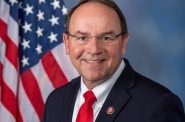Why Urban School Chiefs Fail
The lessons of former MPS superintendent Gregory Thornton’s firing in Baltimore.
In February, 2014, not long after Milwaukee School Superintendent Gregory Thornton announced he was leaving town for a job running the Baltimore Public Schools, Journal Sentinel education columnist Alan Borsuk told WUWM-FM he believed Thornton was not happy in Milwaukee. ”He was frustrated by the board; he was frustrated by the general inertia of change in Milwaukee, that things he wanted to get done couldn’t get done,” Borsuk said.
And so Thornton went to Baltimore, telling the press there it offered a much less “complex” situation than Milwaukee. Yet within a year he was facing controversy and complaints that led to his firing early this month. Thornton had lasted just two years. Nationally, the average urban superintendent’s tenure is just 3.2 years. That kind of turnover tells us what a difficult job it is and also why success is infrequent: just how much can you accomplish in three years?
My sense was that Thornton did a pretty good job in Milwaukee. A more mixed review was offered in a 2014 story on Thornton’s time here by the Baltimore Sun.
Both in Milwaukee and Baltimore, Thornton was criticized for not communicating enough, which was a contributing factor in his recent firing. Marnell Cooper, the Baltimore School Board’s chair, praised Thornton for managing sizable budget shortfalls, working to implement a $1 billion school construction project, and securing a free-meal program for all students.
“But Thornton’s critics pointed to poor academic performance,” a Baltimore Sun story noted. “Dropout rates are up, and the results from new standardized tests were worse than expected. The system also saw an unexpected drop in enrollment of 1,900 students after years of growth.”
Like all big city school systems, Baltimore’s average achievement test results are abysmal. Statistics from the NAEP testing program found just 14 percent of students tested at or above the proficient level in 2013, compared to 18 percent for Milwaukee Public Schools that year. That might help explain Baltimore’s enrollment drop under Thornton: families look for any alternative to a system like that, and any improvements a superintendent manages to oversee can only be marginal, given how low the achievement level is.
This is what you would expect to encounter if you take most poor students in a metro area and concentrate them in one school system. As in most urban systems, the vast majority of Milwaukee Public School students are eligible for free lunch. Most students come from financially-stressed, single-parent families who are often subject to evictions, causing huge disruptions in their lives and resulting in teachers seeing one-third of their students transfer out or into the class within a year.
Students in Wisconsin’s wealthiest school districts are four grade levels above students in the poorest school districts, as a recent analysis found. This is both because wealthy families are more stable with better educated parents, but also because the per-pupil spending is higher in municipalities with a more bountiful property tax base. To reduce that huge difference the state sends more school funding to poorer school systems, but that formula has been steadily watered down since the 1990s and has declined markedly since 2006.
Milwaukee, moreover, is in unique among big cities in the many routes it provides for more motivated students, those likely to perform better, to avoid MPS. The open enrollment system allows any city students to transfer to suburban schools that have openings. Chapter 220 (which is finally being phased out) allows the city’s minority students to transfer to suburban schools. Milwaukee has a more robust system of Catholic and Lutheran schools than many cities as a result of voucher funding. Beyond that there are all kinds of non-religious choice and charter schools located throughout the city. And so MPS has year by year seen its enrollment include an ever-higher percentage of low-income and special education students.
Thornton, in a rare moment of candor, compared the “less complex” Baltimore to Milwaukee, telling Baltimore’s City Paper “you don’t have 34,000 children in vouchers, you don’t have a charter system that’s supported by the governor, supported by the mayor, who can charter schools, supported by the UW system that can charter schools, by every community college that can charter schools—and God only knows what the legislation is this year.”
That next piece of legislation did indeed come: the recent state law that allows Milwaukee County Executive Chris Abele and his specially appointed school commissioner to take control of some of Milwaukee Public Schools’ poorest performing schools. Abele chose Mequon-Thiensville Superintendent Demond Means, which in essence adds a competing administrator to make decisions about a system that is being run by Thornton’s replacement, Milwaukee superintendent Darienne Driver. Not surprisingly, she doesn’t seem pleased by the situation.
Even before this latest change, Thornton felt squeezed by the educational vise in Milwaukee. “He wanted to do more privatization and more charters than the school board wanted to,” Milwaukee school board member Terrence Falk told the Baltimore Sun. Falk acknowledged that Thornton was in a tricky situation: “If he swung too far toward privatization, he would anger the board; if he was perceived as hostile to vouchers and charters, he would alienate political, business and civic leaders,” as the story summarized.
“Sometimes he was perceived as a villain by both sides,” Rev. Willie E. Brisco, who heads the Milwaukee Inner City Congregations Allied for Hope, told the Sun. “I just don’t know if there is anybody that can really turn this around in this political climate.”
Being the Milwaukee superintendent means you run a school system that is constantly being undercut by all kinds of complex politics, even as a relentless drumbeat of criticism demonizes your schools. You wonder why anyone wants the job.
Driver might be better than Thornton, and with luck, might last longer than the average urban superintendent. If she’s a huge success, that might mean the percent of proficient students rises by, say, five percentage points. No, that wouldn’t make a huge difference, but given the manifest inequalities facing urban students, that would truly be a miracle.
Murphy's Law
-
Tom Tiffany Is a Leading Election Denier
 Nov 3rd, 2025 by Bruce Murphy
Nov 3rd, 2025 by Bruce Murphy
-
Wisconsin Is Creating 2 School Systems
 Oct 29th, 2025 by Bruce Murphy
Oct 29th, 2025 by Bruce Murphy
-
Do Democratic Candidates Need to Be More Moderate?
 Oct 27th, 2025 by Bruce Murphy
Oct 27th, 2025 by Bruce Murphy























This is why vouchers, charters, city and county take overs should all be options. The MPS board is too busy worrying about protecting their territory to make any real changes. By having multiple bodies all working to improve their schools, maybe some of them will make progress and give parents multiple successful options to choose from.
Vouchers, charters, county takeovers and the Chapter 220, for the most part show negligible results in terms of improvement in academic achievement. However, there is a calming effect experienced by parents knowing that their child is in a safer school. MPS should have the flexibility, the individual initiative and the task of creating all the options necessary within the district; neighborhood schools, magnet schools, vocational schools, college prep schools, residential schools for habitual truants and students who have been expelled, merit schools, immersion schools, ELL schools, special ed schools and schools for the gifted and talented. They should also have the authority to create school districts within or separate from the larger public school district. The children of the city are the legal responsibility of those parents and that municipality.
Why shouldn’t they create a public school system that employs all the options necessary to serve the residents? It will take a pervasive, relentless about of leadership and money. The money is available. No funds should go to CH 220, vouchers or any other vehicle other than Open Enrollment, a program that allows a public school student to attend any public school in the state if the capacity is there. The Federal Gov’t, the State, the County and the City of MKE should remove themselves from stewardship of MPS schools, directly, indirectly and surreptitiously.
Bruce, could you explain what you meant by “Chapter 220 (which is finally being phased out) allows the city’s minority students to transfer to suburban schools.”
“Finally being phased out” makes it sound like it’s about time it got nixed. I have heard that it’s one of the better “school choice” options. I believe it also included bussing to make it more feasible.
Virginia, there area few differences in Ch 220 vs. Open Enrollment. Chapter 220’s purpose wasn’t to provide school choice. It was to help integrate suburban schools which were predominantly white, back when 220 first started. Most Milwaukee area suburbs don’t even qualify to participate in 220 now, because they are actually fully racially integrated which means the program worked. Schools can only participate in 220 if they aren’t racially integrated.
Participation in Open Enrollment is a requirement of ALL Wisconsin schools and has nothing to do with integration. It is a law that allows any child to attend a school in any district so long as there is an open seat (and subject to a few other rules). A great part of Open Enrollment is that the school district receiving the child gets the same $ amount in reimbursement no matter what school district the child comes from or goes to, so, financially it’s more equitable for the taxpayer.
I sat next to Thornton at the national school board convention this April. He seemed relaxed. He knew he was on the way out; I didn’t. Other sources have told me that he found the situation in Baltimore much worse than Milwaukee. Baltimore’s budget was classic smoke and mirrors. Thornton had to figure it out, and people didn’t want the truth. So the political situation in Baltimore wasn’t better for him than Milwaukee – maybe worse. Milwaukee doesn’t change its superintendents that often, Dr. Driver is beginning her third year. Thornton completed four years in Milwaukee, but he could have stayed longer. Before that, William Andrekopoulos was superintendent for eight years! While other urban districts keep cycling through superintendents, Milwaukee tries to work with the superintendents they have.
mygreendoor: Thanks for following up. This linked article does refer to the 220 program as an early “choice” option (though “choice” may not have been a buzzword then and “integration” was). But those quoted do note that 220’s phase-out limits the choices for students since Open Enrollment does not provide bussing. If your family can’t arrange or afford to get you to a specific school, you can’t attend it even if you’re accepted.
I still do not see any real benefits of ending the 220 program. Even if some suburbs are officially “racially integrated,” students were still benefitting by being able to enroll and get bussed to those schools, whether in the city or suburbs. Sure, Open Enrollment remains, but it seems ending 220 was increasing choices among public schools, in a state obsessed with “school choice.”
http://www.jsonline.com/news/education/scott-walker-bid-to-end-integration-program-has-schools-seeking-answers-b99456791z1-295392981.html
Correction: Meant to write, “Sure, Open Enrollment remains, but it seems 220 was increasing choices among public schools, in a state obsessed with “”school choice.’”
The Defenseless public school system continues its battle with the Evil Empire. Superintendents are either pawns or opportunists generally. The fight has to be courageous. As Bruce succinctly explained, the expectations are ridiculous and the suburban politicians are bigoted ruling class tyrants. Teaching is a pedagogy based on child development. It is an art and a science. Children are honored in great societies. Our society protects and entitles wealth and private property. Let’s stop pursuing false gods and scapegoats!
Since 1974 Conservatives have wanted to bust up MPS, cause it just does not work, The left, Unions, Mayors, Vliet st.mob fights any changes. They want to keep the poor barefoot , pregnant and in the kitchen, so they vote right.